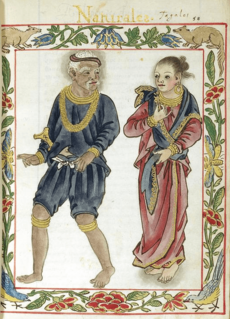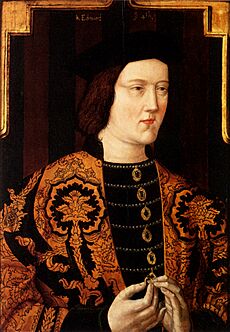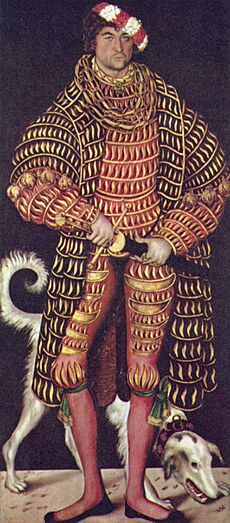History of clothing and textiles facts for kids
The study of clothing and textiles explores how clothes and fabrics have changed throughout human history. It shows what materials and tools were available in different times and places. The types of clothing and how they were used also tell us a lot about a society's customs and culture.
Humans are the only animals who wear clothes. Scientists used to disagree on when people started wearing clothes. But new studies, looking at how body lice evolved, suggest it began around 170,000 years ago. This invention helped early humans move out of Africa into colder places. Experts believe people first used animal skins and plants to protect themselves from cold, heat, and rain.
The history of textiles is almost as old as human civilization. Over time, it has become much richer. For example, silk weaving came to India around 400 AD. But cotton spinning in India goes back to 3000 BC. Recent discoveries in Pakistan even show cotton fibers being used as early as 7000 BC!
Textiles can be made from felt or from fibers spun into yarn. This yarn can then be netted, looped, knit, or woven into fabric. The first fabrics appeared in the Middle East during the late Stone Age. From ancient times until now, how we make textiles has kept changing. The different types of fabrics available have affected how people carried their things, dressed themselves, and decorated their homes.
To learn about clothing history, we look at old items found by archaeologists. We also study how textiles are shown in art. And we read old documents about making, buying, using, and trading fabrics and tools.
Contents
- Early Clothes and Fabrics
- Ancient Textiles and Clothes
- Medieval Clothing and Textiles
- Renaissance and Early Modern Period
- Enlightenment and Colonial Period
- Industrial Revolution
- 20th Century Changes
- 21st Century Issues
- Images for kids
- See also
Early Clothes and Fabrics
Scientists have studied when clothing and textiles first appeared. Estimates have varied widely, from 40,000 to 3 million years ago.
Newer studies use a clever method: they look at lice! Human body lice can't live long without clothes. This means body lice likely appeared around the same time humans started wearing clothes. By studying how body lice changed over time, scientists estimate clothing began around 170,000 years ago.
This timing suggests that wearing clothes might have helped early humans move from warm Africa to colder northern areas. This migration started between 100,000 and 50,000 years ago.
Archaeological finds also support these dates. In 2021, scientists found signs of clothes being made in Morocco between 90,000 and 120,000 years ago. Even with these clues, there's no single date everyone agrees on.
Cave paintings from about 30,000 years ago show people wearing animal skins. Real fabric pieces from 7000 BC have also been found.
First Clothing Tools
Sewing needles have been found that are at least 50,000 years old! Some of the oldest were found in Siberia. Other early needles, from 41,000 to 15,000 years ago, have been found in places like Slovenia, Russia, and France.
The oldest dyed flax fibers were found in a cave in Georgia. They are about 36,000 years old.
Ancient statues, like the "Venus of Lespugue" from 25,000 years ago, show figures wearing skirts or twisted fiber clothing. Other statues show hats, belts, and body wraps. Archaeologists have also found tools from this time that were used for making textiles, like net gauges and weaving sticks.
Ancient Textiles and Clothes
We know much more about ancient textiles now thanks to new technology. After animal skins, felt might have been the next fabric developed. The first known plant-based fabric in South America was found in Peru. It was woven from plant fibers and dates back to 8000 BCE.
Looms for Weaving
A loom is a machine used to weave cloth. For a long time, in Europe, the Near East, and North Africa, two main types of looms were used: the warp-weighted loom and the two-beam loom. The width of the loom determined how wide the cloth would be. Early woven clothes were often made from full loom widths, simply draped or tied around the body.
How Old Fabrics Survived
Our knowledge of ancient cultures depends on the climate where items were found. Dry places like the Middle East, South America, and parts of China have preserved many old fabrics. In northern Europe, peat bogs, salt mines, and frozen ground also kept textiles safe. Famous examples include the clothes found with Ötzi the Iceman. It's harder to know about early textiles in places with moist climates, like India or sub-Saharan Africa.
Trading Textiles in Ancient Times
During the Stone Age and Bronze Age, nomadic groups on the Eurasian Steppe traded and shared their cultures, including clothing styles.
Around 114 BC, China's Han dynasty started the famous Silk Road. This was a network of trade routes connecting China with Asia Minor and the Mediterranean. It stretched over 8,000 kilometers (5,000 miles) by land and sea. The Silk Road helped develop great civilizations like China, Egypt, Mesopotamia, Persia, India, and Rome. Luxury textiles, especially silk, were a main item traded along this route.
Ancient Near East Clothes
The oldest known woven fabrics in the Near East are flax cloths used to wrap the dead. They were found in Turkey and date back to about 6000 BC. Flax was grown in the Near East from about 8000 BC. But sheep with woolly fleece (instead of hair) appeared much later, around 3000 BC.
In ancient Mesopotamia, Sumerian clothing was simple. In summer, people wore very little. In winter, they used sheep fur. Rich men wore short skirts, while women wore long dresses. Kings wore tunics and coats. Over time, wool weaving improved, and clothes became more varied.
Ancient Indian Clothes
Archaeologists have found cotton threads at Indus Valley sites. Statues also show people wearing turbans and shawls with patterns. This suggests people in the Harappan times used clothing. They might have used natural dyes, as indigo plants were common.
The Greek historian Herodotus mentioned Indian cotton in the 5th century BCE, calling it "a wool exceeding in beauty and goodness that of sheep." When Alexander the Great came to India in 327 BCE, his soldiers started wearing comfortable cotton clothes instead of wool.
Ancient Egyptian Clothes
Evidence shows linen cloth was made in Ancient Egypt around 5500 BC. Flax was grown there from about 6000 BC. Other plant fibers like rush, reed, and papyrus were also used for ropes and textiles.
Ancient Egyptians spun yarn by hand. They used a horizontal loom before a vertical loom was introduced from Asia. Linen bandages were used for mummification. Egyptian art shows men wearing linen kilts and women in narrow dresses with sheer, pleated fabrics.
Ancient Chinese Clothes
The earliest signs of silk production in China are from 5000 to 3000 BC. Pieces of early looms have been found from about 4000 BC. Silk fragments from 2700 BC have also been discovered.
Under the Shang Dynasty (around 1600–1046 BC), Han Chinese clothing included a knee-length tunic and a long skirt. Rich people wore silk in bright colors.
Ancient South American Clothes
The oldest textiles in South America are about 12,000 years old. They were found in a cave in Peru. These woven fabrics were likely used for things like baskets and wall coverings. It's thought that women were among these early settlers because textile weaving was often done by women.
Ancient Japanese Clothes
The earliest weaving in Japan is from the Jōmon period. Pottery from this time shows cord patterns. Cloth fragments made from bark fibers and hemp fibers have been found, suggesting these plants were used for clothing. Pottery patterns also show people wearing short tops, tight trousers, and rope-like belts.
During the Yayoi period, rice farming changed society and clothing. People started wearing unsewn fabric wrapped around the body or poncho-like garments.
In the Yamato period (300 to 550 AD), tomb statues show clothing styles changed. People wore two-piece outfits: an upper piece with a front opening and loose trousers for men, and a pleated skirt for women. Silk farming was introduced, but silk was expensive and only used by the wealthy.
Later, in the Asuka and Nara periods (550 to 794 AD), Japan adopted Chinese laws and social rankings. These laws required people to wear different styles and colors to show their social status. Clothes became longer and wider, and sewing methods improved.
Classical Filipino Clothes
In the classical period of the Philippines, clothing showed a person's social standing. Basic clothes were the `bahag` (loincloth) for men and a tube skirt for women. For special occasions, people added blouses, tunics, capes, or long robes. Fabrics varied from abaca (a plant fiber) to cotton, silk, and imported printed cloth.
Men often wore a turban called a `pudong`. A red `pudong` meant the wearer had killed an enemy. The most honored warriors wore a special `pudong` made of very fine, tie-dyed abaca. Women usually wore a kerchief or a wide-brimmed hat.
Classical Greek and Roman Clothes
In Ancient Greece, fabric was woven on a loom. Greek clothing used wide, unsewn pieces of wool or linen. These were pinned and draped around the body. Common clothes included the `peplos` (a loose robe for women), the `chlamys` (a cloak for men), and the `chiton` (a tunic for both). A long cloak called a `himation` was worn over these.
The Roman `toga` was also an unsewn wool cloth, draped by male citizens over a simple tunic. Women wore draped `stola` dresses or ankle-length tunics with a `palla` (shawl). Wool was preferred, but linen, hemp, and some expensive imported silk and cotton were also used.
Iron Age European Clothes
The Iron Age in Europe lasted from about 1200 BC to 500 AD. Bodies found in peat bogs have preserved clothing from this time. Danish recreations show woven wool dresses, tunics, and skirts. These were simple shapes, held in place with leather belts and metal pins. Clothes often had colorful patterns at the edges. Men wore breeches or long trousers, and wool shawls or animal skin capes for warmth.
Medieval Clothing and Textiles
The history of European clothing in the Middle Ages is a popular topic for scholars.
Byzantine Empire Clothes
The Byzantines made and sold very richly patterned cloth. The upper classes wore woven and embroidered fabrics. Common people wore resist-dyed and printed fabrics. By the time of Emperor Justinian, the Roman toga was replaced by the `tunica` (a long tunic) for both men and women. Wealthy people wore other garments over it, like a `dalmatica` (a heavier, shorter tunic). Cloaks were fastened on the right shoulder.
Early Medieval European Clothes
European dress changed slowly between 400 and 1100 AD. People dressed differently depending on if they were Romanized or from new groups like the Franks or Anglo-Saxons. Men from the new groups wore short tunics with belts and visible trousers. Romanized people and the Church kept wearing longer tunics.
Rich people imported silk from the Byzantine and Muslim worlds, and possibly cotton. They could also afford bleached linen and dyed wool made in Europe. Lower classes wore local or homemade wool, often undyed. Clothes were decorated with embroidery or woven patterns.
High Middle Ages and Fashion's Start
In 12th and 13th century Europe, clothing stayed very simple and similar across the continent. Working-class men wore short tunics with hose. Women and upper-class men wore long tunics with over-dresses. Most clothing didn't change much for centuries.
The 13th century saw big improvements in dyeing and working with wool, which was the most important fabric for outer clothes. Linen was used more for clothes worn next to the skin because it could be washed. Cotton was imported for padding and quilting.
Crusaders returning from the Middle East brought knowledge of fine textiles, including light silks, to Western Europe. Silk was a very expensive luxury. Wealthy people could buy woven brocades from Italy. These silks often had patterns of circles and animals, inspired by designs from the Ottoman Empire and China.
Historians agree that the mid-14th century was when "fashion" really began in Europe. From then on, Western fashion changed much faster than in other cultures. In most other places, clothing styles changed only with major political events or very slowly over centuries.
In this period, draped clothes were replaced by tailored clothes with curved seams. Lacing and buttons helped clothes fit the body better. A style called `mi-parti` (parti-colored) became popular for men. This meant wearing garments made of two different fabrics or colors, one on each side. Sometimes, each leg of their hose would be a different color!
Renaissance and Early Modern Period
Renaissance European Clothes
Wool remained the most popular fabric for everyone, followed by linen and hemp. Wool fabrics came in many qualities, from rough undyed cloth to fine, soft broadcloth. High-quality broadcloth was very important to the English economy and was sold all over Europe. Wool fabrics were dyed in rich colors like red, green, gold, and blue.
Silk weaving was strong around the Mediterranean by the beginning of the 15th century. Patterned silks, often velvet with silver threads, were seen more and more in Italian clothing and among the wealthy across Europe. Beautiful floral designs, like pomegranate or artichoke patterns, came from China and became popular in Ottoman silk centers and then spread to silk weavers in Italy and Spain.
As people became wealthier in the 15th century, the middle classes started wearing more complex clothes that followed the styles of the rich. Clothing styles also started to vary more between different countries.
Early Modern European Clothes
By the first half of the 16th century, the clothing of the Low Countries, German states, and Scandinavia had developed in a different direction than that of England, France, and Italy. However, all were influenced by the serious and formal Spanish style after the mid-1520s.
Elaborate `slashing` (cuts in the fabric to show the lining) was popular, especially in Germany. Black became more common for very formal events. `Bobbin lace` appeared in the mid-16th century, likely in Flanders. This century also saw the rise of the `ruff`, which grew from a small ruffle at the neckline to huge, cartwheel shapes that sometimes needed wire supports.
By the early 17th century, there was a clear difference between the plain styles favored by Protestants in England and the Netherlands (still influenced by Spain) and the lighter, more revealing styles of the French and Italian courts.
Beautiful `needlelace` also developed during this time. Lacemaking centers were set up in France to reduce the amount of money spent on Italian lace.
Mughal India Clothes
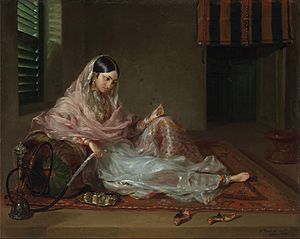
Mughal India (16th to 18th centuries) was a major center for manufacturing until the 18th century. India produced about 25% of the world's industrial goods until 1750. The biggest industry was textile manufacturing, especially cotton. This included making piece goods, calicos, and muslins, which came in many colors. Indian cotton textiles were a huge part of global trade.
Indian textiles were the most important manufactured goods in world trade in the 18th century. They were sold everywhere from the Americas to Japan. The Bengal province was the most important cotton production center. Bengali muslin textiles from Dhaka were even sold in Central Asia. Indian textiles controlled the Indian Ocean trade for centuries.
In early modern Europe, there was a big demand for textiles from Mughal India, including cotton and silk. European fashion became more and more dependent on these Indian fabrics.
Mughal women wore long, loose `jamas` with full sleeves. In winter, they added a `Qaba` or a Kashmir shawl as a coat. They loved perfumes and jewelry, which showed both religious values and style.
Pre-Colonial North American Clothes
Native people across North America made clothes from natural fibers like cotton and agave, and from animal skins like deer or beaver. When Europeans arrived, they brought sheep. Beaver pelts were highly valued for their warmth. Trading beaver pelts was one of the first big businesses in colonial North America.
Enlightenment and Colonial Period
During the 18th century, there was a difference between `full dress` (worn at court and for formal events) and `undress` (everyday clothes). Over time, full dress became less common. Full dress followed the styles of the French court, with rich silks and fancy embroidery. Men continued to wear a coat, waistcoat, and breeches. These sometimes matched, leading to the idea of the `three-piece suit`.
Women's dresses in the 1730s and 1740s had small, domed `hoops`. Later, for formal court wear, `panniers` (side hoops) made dresses incredibly wide, sometimes up to three feet on each side! Fashion became very fancy and decorated. But then, new interests in outdoor sports and a movement towards simpler, more democratic clothing led to an entirely new style after the French Revolution. British wool tailoring became very popular.
For women's dresses, Indian cottons, especially printed `chintzes`, were imported to Europe in large numbers. Towards the end of this period, simple white `muslin` dresses became fashionable.
Industrial Revolution

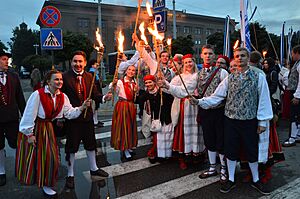
During the Industrial Revolution, making fabric became mechanized. Machines powered by waterwheels and steam engines took over. Production moved from small home-based work to mass production in factories. However, making clothes still involved a lot of hand work.
Sewing machines appeared in the 19th century, making clothing production much faster.
Before factories, textiles were made in local markets. But new transportation like steamboats, canals, and railroads lowered shipping costs. This made it cheaper to buy goods from far away instead of more expensive local goods. Between 1810 and 1840, the growth of a national market tripled the value of manufactured goods. This led to more factories.
Most factory workers were women. Many left home due to crowded conditions or to save money for marriage. The work allowed them to see more of the world and gain a sense of independence. They also sent money home to help their families.
20th Century Changes
The 20th century brought new uses for textiles. It also saw the invention of synthetic fibers and computer-controlled manufacturing.
New Uses for Fabrics
As lifestyles changed in the 20th century, people wanted clothes with special features. They wanted fabrics that were stronger, more elastic, or more durable. These features could be added by different weaving patterns, changing the fibers, or by `finishing` the textiles. Since the 1960s, textiles can be treated to resist stains, flames, wrinkles, and even microbes. New dye technology allowed coloring of fabrics that were hard to dye before.
Synthetic Fibers
After plastics were invented, fibers could be made artificially. `Synthetic fibers` are made by humans through chemical processes, unlike natural fibers. Scientists could control the size and shape of these fibers very precisely. Fibers invented between 1930 and 1970 include nylon, polyester, Spandex, and Kevlar. Clothing makers quickly started using synthetic fibers, often mixing different types for the best properties.
Automation in Factories
The early 20th century continued the progress of the Industrial Revolution. Machines for knitting and weaving already used logical steps. The invention of small electronics and microcontrollers didn't immediately change what these machines could do. But in the 1960s, existing machines got computer-controlled systems. This made them more accurate and efficient. In 1983, the first computer-controlled `Jacquard loom` was introduced. These advances changed factory work, requiring workers to understand computers as well as machines.
21st Century Issues
In the 2010s, the global textile industry faced criticism for practices that harm the environment. Making textiles has a negative impact at most stages of production.
Selling `secondhand clothing` around the world helps reduce landfill waste. However, challenges in international trade and textile recycling mean this market is still small compared to total clothing use. Too much consumption and waste in global fashion have led brands to focus on `textile recycling`. Brands are now advertising products made from recycled materials as consumers expect more sustainable options.
New textile treatments, coatings, and dyes can have unclear effects on human health. `Contact dermatitis` (a skin rash) from textiles is becoming more common among textile workers and regular people.
Experts have noticed that people in Western countries buy new clothes more often. Also, clothes don't last as long. `Fast fashion` is thought to contribute to more textile waste.
In 2013, the worldwide market for textiles and clothing exports was $772 billion. In 2016, the biggest clothing exporting nations were China, Bangladesh, and Vietnam.
Images for kids
-
Sumerian Statues of worshippers (males and females); 2800-2400 BC (Early Dynastic period); National Museum of Iraq (Baghdad)
-
The god Abu (?) and a female statuette; 2800-2400 BC (Early Dynastic period); from the Square Temple of Abu at Tell Asmar (ancient Eshnunna (Iraq)); National Museum of Iraq. The loin-cloth has become recognizably a skirt and the twisted tufts have shrunk to a fringe
-
The Statue of Ebih-Il; c. 2400 BCE; gypsum, schist, shells and lapis lazuli; height: 52.5 cm; Louvre (Paris)
-
The Buddha wearing kāṣāya robes; c. 200 BC; Tokyo National Museum (Japan)
-
Ancient form of Churidar worn during the Gupta period; c. 300 AD; National Museum (New Delhi)
-
Shakuntala, wife of Dushyanta and the mother of Emperor Bharata, from Kalidasa's play Abhijñānaśākuntala, wearing a sari, painting by Raja Ravi Varma, c. 1870.
-
Painting on wooden panel discovered by Aurel Stein in Dandan Oilik, depicting the legend of the princess who hid silk worm eggs in her headdress to smuggle them out of China to the Kingdom of Khotan; 7th to 8th century; British Museum (London)
-
Pair of sandals; 1390–1352 BC; grass, reed and papyrus; Metropolitan Museum of Art (New York City)
-
The Yellow Emperor wearing a mianguan
-
Woven silk textile from the Mawangdui in Changsha (Hunan province, China), from the 2nd century BC
-
The mianfu of Emperor Wu of Jin dynasty, 7th-century painting by court artist Yan Liben
See also
 In Spanish: Historia de la moda para niños
In Spanish: Historia de la moda para niños
- Dress history
- History of fashion design
- History of hide materials
- History of silk
- History of Western fashion
- Otzi's clothing and shoes
- Timeline of clothing and textiles technology


